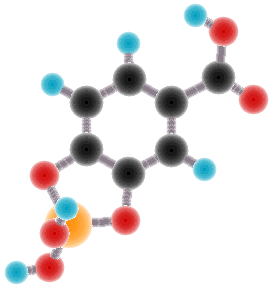Silicate Dissolution Kinetics
Summary
The biosphere is a fundamental component in the weathering of framework silicates. Plants, bacteria, fungi, even mammals, excrete organic waste products that can react with the components of their surrounding geologic materials.Organic acids from the biosphere have been implicated as important reactants in a number of weathering environments. Organic acids may accelerate silicate dissolution, increase silicate solubility, mobilize aluminum and silica, and alter the equilibrium between the solution and the precipitated secondary phases. While the reaction kinetics of aluminosilicate hydrolysis in inorganic aqueous solutions has been examined in detail, mechanisms of dissolution in organic electrolyte solutions are relatively unknown due to difficulties in isolating competing reactions and processes in the system. Our research examines the role of the biosphere in weathering by examining the mechanisms of organic-acid enhanced silicate dissolution.
 Citric acid, tropolone, and 3,4-dihydroxybenzoic acid, known as microbially generated siderophores, were examined for their effects on albite, microcline, kyanite, andalusite, quartz and gibbsite dissolution kinetics. Mineral dissolution experiments were performed at multiple temperatures in various inorganic/organic electrolyte solutions to deduce the nature of organic acid-enhanced mineral dissolution. Mineral surface titration was performed at various electrolyte concentrations in order to determine the effect of ionic strength on surface interactions. UV-difference spectroscopy was used to determine the relative complexation equilibria between organic acids and metals. Possible changes in mineral surface characteristics before and after the dissolution experiments were monitored by BET surface area measurements and Scanning Electron Microscopy (SEM).
Citric acid, tropolone, and 3,4-dihydroxybenzoic acid, known as microbially generated siderophores, were examined for their effects on albite, microcline, kyanite, andalusite, quartz and gibbsite dissolution kinetics. Mineral dissolution experiments were performed at multiple temperatures in various inorganic/organic electrolyte solutions to deduce the nature of organic acid-enhanced mineral dissolution. Mineral surface titration was performed at various electrolyte concentrations in order to determine the effect of ionic strength on surface interactions. UV-difference spectroscopy was used to determine the relative complexation equilibria between organic acids and metals. Possible changes in mineral surface characteristics before and after the dissolution experiments were monitored by BET surface area measurements and Scanning Electron Microscopy (SEM).
In inorganic electrolyte solutions kyanite and andalusite dissolution rates (unlike quartz) decreased as ionic strength increased while microcline rates showed less influenced. Surface titration results showed less protons were adsorbed at the mineral surface at high ionic strength conditions. UV-difference experiments showed a stable tropolone-silica complex was forming at pH~5 while no significant degree of complexation was found at pH~3. Stable Al-organic complexes, however, were formed at pH~3. Dissolution experiments in organic electrolyte solutions showed that organic acids decrease the activation energies of mineral dissolution reactions. Arrhenius plots of the rate results showed non-linear relationships at low temperature region (10~25C).
These results suggest that (1) possible charged ionic species (opposite signs to each other) may be involved in at least one of the intermediate elementary reaction steps of kyanite and andalusite dissolution; (2) microbially generated siderophores be effective weathering agents at near-neutral pH conditions by forming stable silica-organic solution complexes where aluminum-organic complexes probably decrease; (3) organic acids increase the mineral dissolution rates via metal-organic surface complexation by weakening the rate-limiting framework bonds; (4) the relative importance of organic acids in mineral dissolution rates could be greater at low temperature. (This article is an abstract used in Wan-Joo Choi’s 1996 Tech-Talk presentation.)
Project Overview
Meet the Researchers
- Wan-Joo Choi
- Phil Bennett

